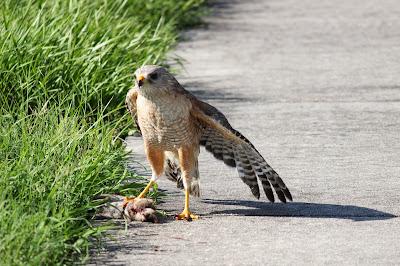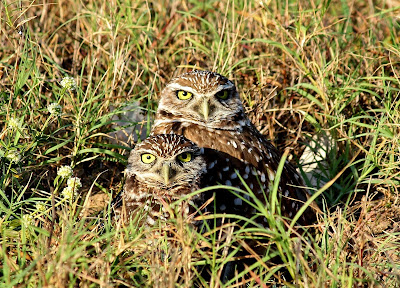Today's featured feather friend is the Tricolored Heron. Most of the "birders" we know simply refer to it as the "Tri". It was formerly known as the Louisiana Heron and is a year round Florida resident. It is also found in coastal areas of the eastern United States and Mexico, throughout the Caribbean and Central America, and in parts of northern South America.
The Tri is a beautifully colored, medium-sized, slender, long-necked, long-legged and long-billed Heron. It measures about 26 inches in length, weighs just under a pound and has a wingspan of around 38 inches. Males and females are similar in appearance. Adults have a slate blue head, neck, back and wings with reddish tones on the neck and back. The breast and belly are snowy white with white streaking on the throat and neck. In breeding plumage it's yellow bill turns cobalt blue, it grows purplish plumes on it's back and white plumes on the back of it's crown. Juveniles are similar to adults, but with brownish necks.
While hunting in shallow water, the Tri often runs with wings spread, head held low to the water, ready to stab with it's dagger-like bill. This foraging technique (dancing) is very entertaining. On a recent visit to Fort Desoto County Park we took several videos. Watch the dance of the Tricolored Heron by clicking here ------> http://youtu.be/BUS9DZueMZ4 and enjoy some of our favorite photos of the gorgeous Tricolored Heron.....tweet.....tweet!!
 |
| Tricolored Heron (Adult) (Taken 11/9/13, Sports Complex, Englewood FL) |
 |
| Tricolored Heron (Adult) (Taken 12/26/13, Ft. Desoto Park, St. Petersburg FL) |
 |
| Tricolored Heron (Juvenile) (Taken 9/8/13, Sports Complex, Englewood FL) |
 |
| Foraging in shallow water (Taken 11/9/13, Sports Complex, Englewood FL) |
 |
| Ready to strike..... (Taken 12/26/13, Fort Desoto Park, St. Petersburg FL) |
 |
| .....Gotcha !! (Taken 12/26/13, Ft. Desoto Park, St. Petersburg FL) http://www.allaboutbirds.org/guide/Tricolored_Heron/id http://en.wikipedia.org/wiki/Tricolored_Heron |






















.JPG)
.JPG)



.JPG)





.JPG)





.JPG)
.JPG)


.JPG)